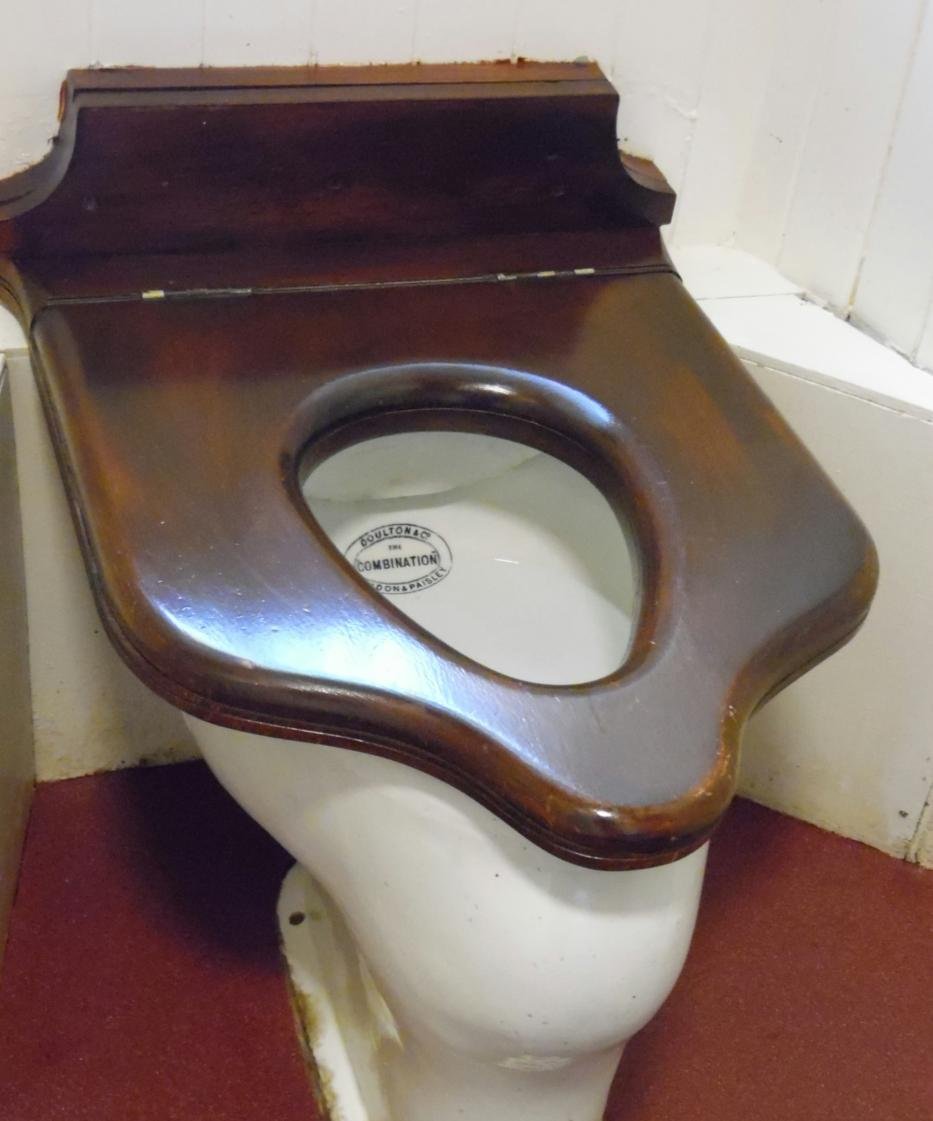Introduction to Padded Toilet Seats
Padded toilet seats are a contemporary alternative to traditional hard-surfaced toilet seats, designed to enhance comfort and provide a more luxurious experience during use. These seats feature a soft foam layer, often covered in vinyl or fabric, which allows for a cushioned feel that can significantly reduce discomfort, particularly for extended periods of sitting. The primary distinguishing feature of padded toilet seats is the added layer of padding that molds to the body, providing a personalized comfort level that standard seats typically lack.
The rising popularity of padded toilet seats can be attributed to several factors, including increasing awareness of ergonomics within home design and the trend toward creating more comfortable living spaces. As consumers seek to enhance comfort in even the most mundane of household fixtures, padded toilet seats have become an appealing option. Their design is especially favored by individuals who may experience sensitivity or discomfort when using standard toilet seats, such as the elderly or those with specific medical conditions. Additionally, padded toilet seats are available in a variety of colors and patterns, allowing consumers to select options that match their bathroom décor, further contributing to their appeal.
This blog aims to delve deeper into the benefits associated with choosing a padded toilet seat. By exploring aspects such as comfort, aesthetics, and practical advantages, we hope to provide valuable insights for those considering an upgrade from traditional toilet seating. Understanding these benefits will equip consumers with the necessary information to make informed choices regarding their bathroom accessories, ultimately improving their overall experience in these private spaces.
Enhanced Comfort and Support
Padded toilet seats are increasingly recognized for their significant contributions to user comfort, particularly for individuals with varying mobility issues or those who may spend extended time on the toilet. The cushioning material used in these seats offers a soft and inviting surface, which can alleviate pressure points and enhance the overall toilet experience. Unlike standard toilet seats, which can feel rigid and unyielding, padded options provide a gentle, enveloping feel that supports the body’s contours.
One of the noteworthy advantages of a padded toilet seat is its ability to provide support for individuals with joint pain or limited mobility. For instance, elderly users often find that the additional cushioning makes it easier to sit down and stand up, consequently reducing strain on their legs and back. Users have reported significant relief when transitioning to a padded seat, claiming that it eliminates the discomfort often associated with standard hard seats. This is especially beneficial for those recovering from surgery or experiencing chronic pain conditions, as the softer surface can make a genuine difference in their comfort levels.
Testimonials from users underscore the positive impact of padded seats. One user shared, “Since installing a padded toilet seat, the discomfort I used to feel during long periods is gone. It has transformed my daily routine.” Another mentioned, “I never thought a toilet seat could make such a difference, but the cushion truly adds that extra layer of comfort I didn’t know I needed.” These anecdotal reflections highlight the growing preference for padded options among various demographics, reinforcing the notion that the luxury of a padded toilet seat can indeed elevate the everyday experience. Ultimately, investing in this type of seat may not only enhance comfort but also promote greater accessibility for diverse users.
Improved Hygiene and Maintenance
Padded toilet seats present several advantages in terms of hygiene and maintenance compared to traditional hard seats. The materials used in padded seats are typically designed to be more resistant to bacterial growth, which is a significant factor when considering bathroom hygiene. For instance, many padded options are manufactured from materials that feature antimicrobial properties, effectively reducing the proliferation of germs and bacteria. This is essential in maintaining a clean and healthy bathroom environment, as toilets are known to harbor various pathogens.
Moreover, padded toilet seats are often easier to clean than their hard counterparts. The smooth surfaces of these padded options allow for a more thorough cleaning process, ensuring that no dirt or grime gets trapped in hard-to-reach crevices. When cleaning, it is advisable to use non-abrasive cleaners that are specifically designed for bathroom use. Regular cleaning not only enhances hygiene but also prolongs the lifespan of the padded seat, keeping it in good condition for an extended period.
To maintain optimal hygiene with a padded toilet seat, users should incorporate a few simple practices. First, it is recommended to wipe down the seat after each use with disinfectant wipes or a suitable cleaning solution. This daily maintenance helps to minimize any buildup of bacteria. Additionally, periodic deep cleaning of the seat can be performed to address any stubborn stains or odors. Lastly, ensuring that the toilet seat’s cover is kept closed when not in use can further reduce the spread of germs and promote a cleaner bathroom environment.
Aesthetic Appeal and Customization

Padded toilet seats are not only practical but also serve as a significant component of bathroom decor, allowing for personalized expression. When considering the aesthetic appeal of padded toilet seats, one must acknowledge the myriad of options available in terms of materials, colors, and patterns. These seats can dramatically enhance the overall ambiance of any bathroom, transforming a utilitarian space into a visually appealing sanctuary.
The variety of materials used in padded toilet seats is extensive. From luxurious velvet and soft microfiber to durable vinyl and leather-like fabrics, consumers have the flexibility to select a surface that not only feels comfortable but also complements the theme of their bathroom. Each material offers distinct benefits in terms of maintenance and durability, allowing buyers to choose an option that aligns with their lifestyle and decor needs.
Color and pattern choices are equally diverse, enabling individuals to tailor their toilet seat to match or contrast with existing fixtures and color schemes. Whether someone prefers bold, eye-catching colors or subtle, muted tones, there is a padded toilet seat available to fit every taste. Patterns, ranging from traditional florals to contemporary geometric designs, expand the customization potential further, making it possible to integrate a padded toilet seat seamlessly into various design philosophies, such as vintage, rustic, or modern.
Ultimately, the increased aesthetic appeal and customization options offered by padded toilet seats allow consumers to express their personality while enriching their bathroom’s decor. Choosing a padded toilet seat that resonates with one’s personal style not only enhances comfort but also contributes to a cohesive and inviting environment. By focusing on individual preferences, homeowners can create a space that reflects their unique tastes through even the smallest details.
Accessibility for Seniors and Disabled Individuals
In the context of enhancing daily comfort and safety, padded toilet seats provide significant advantages for seniors and individuals with disabilities. The design and features of these seats cater specifically to those with reduced mobility, ensuring they can maintain independence while using the bathroom. One notable aspect is the additional cushioning, which offers enhanced support, reducing the risk of discomfort during use. Unlike standard toilet seats, padded options feature a soft surface that eases pressure on the body, promoting a more pleasant experience.
Padded toilet seats often come equipped with raised edges, which aid in stability and help users maintain balance while sitting or standing. This feature is particularly beneficial for individuals who struggle with physical instability, as it offers an extra layer of security. The raised design can facilitate a smoother transition for those who require assistance in navigating their bathroom space. Additionally, many padded toilet seats are designed to be easily affixed to existing toilet bowls, allowing for simple installation without the need for professional help. This ease of use is crucial for seniors and disabled individuals who may find standard fixtures cumbersome or difficult to manipulate.
Moreover, the ergonomic design of these seats can contribute to improved accessibility. Users with disabilities often contend with barriers in their daily routines, and a padded toilet seat can alleviate some of these challenges. The comfortable cushioning combined with supportive features such as non-slip surfaces, ensures that individuals feel secure while using the toilet. Consequently, this not only fosters greater independence but also enhances overall dignity. In the quest for an accessible living environment, opting for a padded toilet seat can serve as a practical solution that meets the unique needs of seniors and those with disabilities.
Safety Features of Padded Toilet Seats
Padded toilet seats offer an array of safety features designed to enhance user comfort while minimizing the risks of accidents in the bathroom. One of the primary attributes of these seats is their anti-slip surface. The non-slip material ensures that users maintain a firm grip, reducing the likelihood of slipping when transitioning on or off the toilet. This feature is particularly beneficial for families with young children who are still mastering balance and coordination, as well as for seniors who may have mobility challenges.
Additionally, padded toilet seats are often equipped with secure mounting systems that play a crucial role in their overall safety. These mounting systems are designed to keep the seat firmly affixed to the toilet bowl, preventing any unwanted movement during use. Unlike regular toilet seats that may loosen over time, the secure locks utilized in padded seats promote stability. This is particularly important in preventing falls, which can occur when a seat moves unexpectedly under the user’s weight.
Moreover, the cushioning provided by padded toilet seats contributes to safety as well. The soft yet supportive padding reduces pressure points, making it more comfortable for users to sit for longer periods. This is especially beneficial for elderly individuals who may require extended time for various personal hygiene tasks. The ergonomic design of padded toilet seats enhances comfort while also ensuring that individuals can rise from the seat with greater ease.
In a space where slips and falls are common, the combination of anti-slip surfaces, secure mounting systems, and supportive padding make padded toilet seats an ideal choice for fostering a safer bathroom environment, particularly in homes with children and elderly members. Their thoughtful design plays a pivotal role in accident prevention, thus providing peace of mind to users and caregivers alike.
Cost Analysis: Padded vs. Standard Toilet Seats
The choice between padded toilet seats and standard ones primarily revolves around the cost, durability, comfort, and health benefits associated with each type. Generally, standard toilet seats range in price from $10 to $60. In contrast, padded toilet seats, which offer enhanced comfort and support, typically cost between $25 and $100. While the initial investment in padded seats may seem higher, various factors contribute to their overall value for money.
Durability is a key consideration when comparing these two options. Padded toilet seats are often made from materials that are designed to withstand wear and tear better than their standard counterparts. This increased longevity can result in less frequent replacement, thus balancing out the initial price. Several consumer reviews highlight that many users find the padded option retains its integrity for several years longer than standard plastic or wooden models.
Comfort is another important factor, especially for users with mobility issues or those who spend extended periods on the toilet. Padded toilet seats provide a softer, more cushioning surface, potentially reducing discomfort and promoting longer use without discomfort. Reports indicate that many individuals have favored the padded seats for their ergonomic benefits and overall satisfaction, noting reduced pain and easier mobility during using the restroom.
Finally, health benefits should not be overlooked. Padded options can contribute to better overall hygiene by providing a more pleasant seating experience, which is particularly beneficial for the elderly and those recovering from surgery. Statistics show that users of padded seats report a higher satisfaction rate, often citing improved comfort levels and quality of life as positive outcomes from their investment. While the upfront cost may be higher, the potential for enhanced user experience and longevity renders padded toilet seats a sensible choice in the long run.
Environmental Considerations
The growing awareness of environmental issues has brought sustainability to the forefront of consumer choice, even in seemingly mundane products like toilet seats. When considering a padded toilet seat, it is essential to examine not only the comfort and aesthetic appeal but also the materials used in the seat’s construction and their environmental implications. Traditional padded toilet seats often utilize synthetic materials and plastics, which have a significant ecological footprint. Conversely, sustainable alternatives are now available, offering consumers options that align with eco-friendly principles.
Many manufacturers are increasingly using biodegradable materials or recycled plastics in the production of padded toilet seats. For instance, seats made from bamboo or biodegradable wood composites can provide the same comfort while minimizing environmental harm. Additionally, some brands are focusing on utilizing water-based adhesives and finishes instead of their solvent-based counterparts, reducing harmful emissions during manufacturing. This shift indicates a broader trend towards prioritizing sustainable manufacturing practices in the bathroom fixture industry.
Consumers seeking to make environmentally responsible choices can begin by researching brands committed to sustainability. It is beneficial to look for certifications, such as Forest Stewardship Council (FSC) or Cradle to Cradle, which indicate adherence to eco-friendly standards. Also, selecting products that feature minimal packaging can further lessen waste. Furthermore, considering the longevity and durability of padded toilet seats is pivotal; a more robust product often means less frequent replacements, thereby reducing resource consumption over time.
In summary, the impact of choosing padded toilet seats extends beyond comfort to include significant environmental considerations. As more manufacturers adopt sustainable practices, consumers are faced with a unique opportunity to make choices that support both their comfort and the health of the planet.
Conclusion
In evaluating the numerous advantages of padded toilet seats, it becomes evident why they are a compelling choice for many. Comfort is paramount in any bathroom experience; padded toilet seats offer a cushioned surface that brings a sense of luxury and relaxation. The soft material provides a warm and inviting feel, especially during colder months, eliminating the discomfort often associated with standard toilet seat options.
Moreover, padded seats can be an elegant addition to your bathroom’s decor. Available in various colors and designs, they cater to different aesthetic preferences, allowing you to enhance your personal style while ensuring comfort. This dual functionality, combining comfort with design, is often a determining factor for homeowners looking to create a welcoming environment in their bathrooms.
Additionally, for individuals with mobility issues or specific health concerns, padded toilet seats provide invaluable support. They can greatly ease the process of sitting down and standing up, making daily routines less taxing. This underscores the importance of considering your own needs and those of your family before making a final decision on which type of toilet seat best suits your circumstances.
Ultimately, the decision between a padded or standard toilet seat should be guided by a combination of comfort and personal style. It encourages an active choice that reflects your values regarding bathroom aesthetics and usability. We invite you to reflect on your own experiences with padded versus standard toilet seats. Have they offered you the comfort you were seeking, or do you prefer the simplicity of a traditional model? Share your thoughts and insights with us, as your feedback can help others make informed decisions in their quest for the perfect toilet seat.

